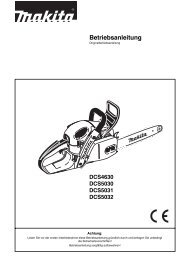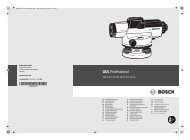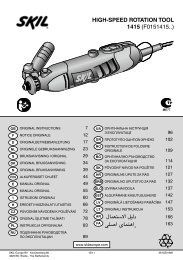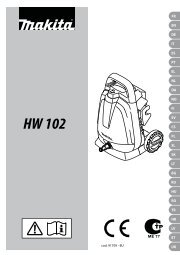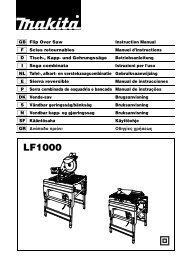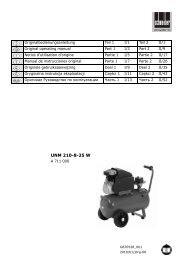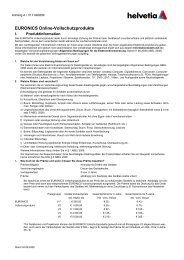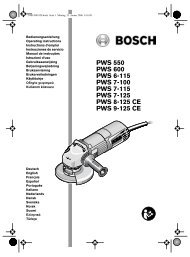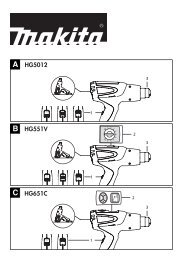Create successful ePaper yourself
Turn your PDF publications into a flip-book with our unique Google optimized e-Paper software.
CHARGING PROGRAM<br />
DESULPHATION SOFT START BULK ABSORPTION<br />
ANALYSE RECOND FLOAT<br />
PULSE<br />
VOLTAGE (V)<br />
CURRENT (A)<br />
NORMAL<br />
AGM<br />
RECOND<br />
SUPPLY<br />
15.8V<br />
15.8V<br />
1 2 3 4 5<br />
6 7<br />
8<br />
10A until 12.6V<br />
10A until 12.6V<br />
15.8V 10A until 12.6V<br />
Increasing voltage<br />
to 14.4V @ 25°C<br />
10A<br />
Increasing voltage<br />
to 14.7V @ 25°C<br />
10A<br />
Increasing voltage<br />
to 14.4V @ 25°C<br />
10A<br />
14.4V @ 25°C<br />
Declining current<br />
14.7V @ 25°C<br />
Declining current<br />
14.4V @ 25°C<br />
Declining current<br />
Limit: Max 8h<br />
Max 8h<br />
Max 20h Max 10h 3 minutes<br />
STEP 1 desulphation<br />
Detects sulphated batteries. Pulsing current and voltage, removes sulphate from the lead<br />
plates of the battery restoring the battery capacity.<br />
STEP 2 soft start<br />
Tests if the battery can accept charge. This step prevents that charging proceeds with a<br />
defect battery.<br />
STEP 3 bulk<br />
Charging with maximum current until approximately 80% battery capacity.<br />
STEP 4 absorption<br />
Charging with declining current to maximize up to 100% battery capacity.<br />
Checks if voltage<br />
drops to 12V<br />
Checks if voltage<br />
drops to 12V<br />
Checks if voltage<br />
drops to 12V<br />
Max 15.8V<br />
1.5A<br />
30 min or 4h<br />
depending on<br />
battery voltage<br />
13.6V<br />
10A<br />
13.6V<br />
10A<br />
13.6V<br />
10A<br />
Max 13.6V<br />
10A<br />
10 days<br />
Charge cycle restarts<br />
if voltage drops*<br />
12.7V‒14.4V<br />
10‒2A<br />
12.7V‒14.7V<br />
10‒2A<br />
12.7V‒14.4V<br />
10‒2A<br />
Charge cycle restarts<br />
if voltage drops<br />
STEP 5 analysE<br />
Tests if the battery can hold charge. Batteries that can not hold charge may need to be replaced.<br />
STEP 6 recond<br />
Choose the Recond program to add the Recond step to the charging process. During the Recond step<br />
voltage increases to create controlled gasing in the battery. Gasing mixes the battery acid and gives<br />
back energy to the battery.<br />
STEP 7 float<br />
Maintaining the battery voltage at maximum level by providing a constant voltage charge.<br />
STEP 8 pulse<br />
Maintaining the battery at 95–100% capacity. The charger monitors the battery voltage and gives a<br />
pulse when necessary to keep the battery fully charged.<br />
*Supply program is not time or voltage limited.<br />
EN<br />
EN • 5



